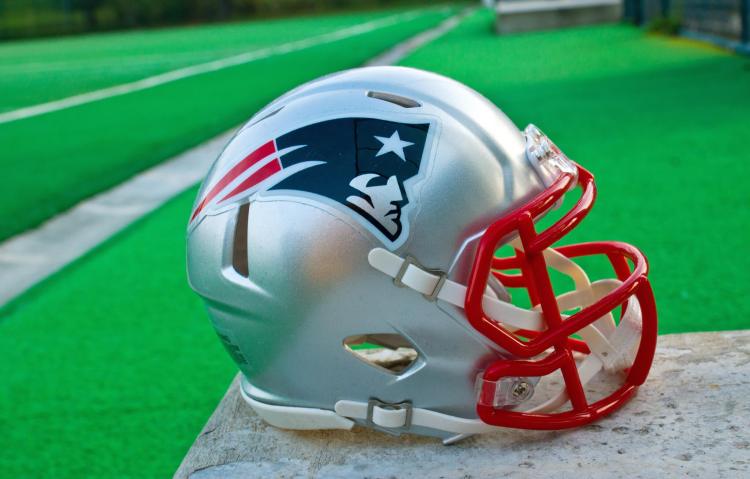When Super Bowl 51 (pardon me, “LI”) hits TV screens nationwide, Fox viewers will be treated to unique, immersive glimpses from the field, using Intel’s 360 Replay virtual camera. But even more intriguing is what’s happening behind the scenes—more and more teams, including Super Bowl contenders the New England Patriots, are convinced that virtual reality will change the way players prepare for the big game.
The Patriots, who face the Atlanta Falcons, are one of six teams now using a VR training system designed by Palo Alto startup StriVR. Others include the Dallas Cowboys, Minnesota Vikings, and Arizona Cardinals. The system, inspired by work done at Stanford’s VR lab, uses 360-degree video to put players—primarily quarterbacks—through their paces, with less physical risk and wear-and-tear than on-field practice, and more interactivity than just watching game video.
The Pats were early adopters, becoming the third team to sign up with StriVR back in mid-2015. No word on whether Patriots QB Tom Brady has trained using the tech—though he is featured in a Super Bowl ad for the Intel 360 video system.
But another legendary quarterback has cosigned the idea in a big way. At the Consumer Electronics Showcase in January, hall of famer Joe Montana said he wished he’d had VR in his heyday, emphasizing that mental preparation is the largest part of quarterbacking.
That’s one big reason the StriVR system uses 360-degree video of plays, often shot during team practices, instead of 3D graphics. It’s closer to an immersive film than a fully interactive simulation, but as Fortune reported when we first checked in on StriVR in 2015, research shows that seeing real humans in action helps the brain refine its timing and stay focused. And because football is based on coordinated plays with fixed timing (at least in theory), rote repetition helps program players’ muscle memory.
There’s an intriguing further possibility here. Intel’s 360 video system allows a ‘virtual’ camera to recreate a first-person perspective by compiling film shot from a variety of outside angles. If teams could get access to the full feed of game cameras, they could give QBs virtual run-throughs of past real games, even if there was nobody on the field wearing a 360 camera.
According to Recode, StriVR has expanded its list of NFL clients to six. It has also started building experiences for fans, including a Boston Red Sox VR project, and a hockey ‘goalie simulator’ that lets LA Kings fans practice blocking pucks.
Be the #LAKings goalie with our VR Experience at tonight's game outside of Section 105! pic.twitter.com/DUlNFj4U1a
— LA Kings (@LAKings) January 19, 2017
Of course, there’s a vague dystopian edge to all this. If quarterbacks are training in VR, and fans are watching the game in immersive 360 video, does the actual action on the field get lost in the virtual shuffle?
But the transition of spectatorship to television has already irrevocably changed how we experience sports—if anything, VR is most people’s best chance to reconnect with games that cost hundreds of dollars to attend in person. And the game could benefit immensely if VR training fulfills its promise, giving players more insight and, at least as important, longer careers. For a strange and promising parallel, just look at the world of chess, where computer training has raised the bar for human players.
And if you’re really worried about technology creeping into your Sunday ritual, here’s one big reassurance: it’ll be a while before a robot can throw deep on the run.
This story originally appeared on Fortune.com. Copyright 2017
VentureBeat's mission is to be a digital town square for technical decision-makers to gain knowledge about transformative enterprise technology and transact. Learn More

